Alison McKenna, Untitled Diptych (2016), acrylic, flashe, spray paint, graphite on paper, two parts 41.5 x 29.5cm each - image courtesy John Marchant Gallery.
"> Alison McKenna, installation image at John Marchant Gallery July 2017 - photography by John Marchant
">
Alison McKenna, installation image at John Marchant Gallery July 2017 - photography by John Marchant
"> Alison McKenna, Untitled (2017), acrylic, housepaint, charcoal, spray paint, pencil on linen, 195 x 130 cm - image courtesy John Marchant Gallery
">
Alison McKenna, Untitled (2017), acrylic, housepaint, charcoal, spray paint, pencil on linen, 195 x 130 cm - image courtesy John Marchant Gallery
"> Alison McKenna, Untitled (2017), acrylic, housepaint, charcoal, spray paint, pencil on linen, 195 x 130 cm - image courtesy John Marchant Gallery
">
Alison McKenna, Untitled (2017), acrylic, housepaint, charcoal, spray paint, pencil on linen, 195 x 130 cm - image courtesy John Marchant Gallery
"> Alison McKenna, Untitled Diptych (2016), acrylic, flashe, spray paint, graphite on paper, two parts 41.5 x 29.5cm each - image courtesy John Marchant Gallery.
">
Alison McKenna, Untitled Diptych (2016), acrylic, flashe, spray paint, graphite on paper, two parts 41.5 x 29.5cm each - image courtesy John Marchant Gallery.
">
Alison McKenna, Untitled (2017), flashe, acrylic, spray paint on canvas, 200 x 155 cm - image courtesy John Marchant Gallery ">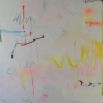 Alison McKenna, Untitled (drawing 1) 2017, acrylic, house paint, pencil on paper, 38 x 28 cm - image courtesy John Marchant Gallery
">
Alison McKenna, Untitled (drawing 1) 2017, acrylic, house paint, pencil on paper, 38 x 28 cm - image courtesy John Marchant Gallery
">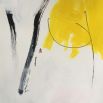 Alison McKenna, Untitled (drawing 2) 2017, acrylic, house paint and spray paint on paper, 38 x 28 cm - image courtesy John Marchant Gallery
">
Alison McKenna, Untitled (drawing 2) 2017, acrylic, house paint and spray paint on paper, 38 x 28 cm - image courtesy John Marchant Gallery
">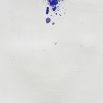 Alison McKenna, Untitled Diptych (drawing 3) 2017, acrylic, house paint and spray paint on paper, two Parts, 38 x 28 cm each - image courtesy John Marchant Gallery
">
Alison McKenna, Untitled Diptych (drawing 3) 2017, acrylic, house paint and spray paint on paper, two Parts, 38 x 28 cm each - image courtesy John Marchant Gallery
">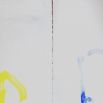
Alison McKenna, Untitled (drawing 4) (2017), acrylic, house paint, spray paint on paper, 28 x 38 cm - image courtesy John Marchant Gallery ">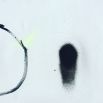 Alison McKenna, Untitled (drawing 5) (2017), acrylic, house paint and spray paint on paper, 38 x 28 cm - image courtesy John Marchant Gallery
">
Alison McKenna, Untitled (drawing 5) (2017), acrylic, house paint and spray paint on paper, 38 x 28 cm - image courtesy John Marchant Gallery
">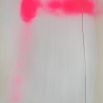 Alison McKenna, Untitled (2017), acrylic, charcoal, spray paint, pencil on linen, 195 x 130 cm - image courtesy John Marchant Gallery
">
Alison McKenna, Untitled (2017), acrylic, charcoal, spray paint, pencil on linen, 195 x 130 cm - image courtesy John Marchant Gallery
">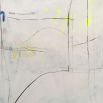 Alison McKenna, Untitled (2017), acrylic, house paint and spray paint on paper, two parts, 38 x 28 cm each - image courtesy John Marchant Gallery
">
Alison McKenna, Untitled (2017), acrylic, house paint and spray paint on paper, two parts, 38 x 28 cm each - image courtesy John Marchant Gallery
">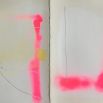
Alison McKenna, Untitled (drawing 6) (2017), acrylic, house paint and spray paint on paper, two Parts 42 x 29.7 cm each - image courtesy John Marchant Gallery ">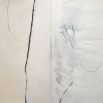 Alison McKenna, Untitled (drawing 7) (2017), acrylic, house paint and spray paint on paper, 38 x 28 cm - image courtesy John Marchant Gallery
">
Alison McKenna, Untitled (drawing 7) (2017), acrylic, house paint and spray paint on paper, 38 x 28 cm - image courtesy John Marchant Gallery
">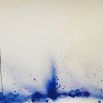 Alison McKenna, Andalucia, Spain - Photography by Yeshe Mc Kenna
">
Alison McKenna, Andalucia, Spain - Photography by Yeshe Mc Kenna
">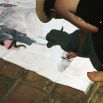 Alison McKenna, Andalucia, Spain - Photography by Yeshe Mc Kenna
">
Alison McKenna, Andalucia, Spain - Photography by Yeshe Mc Kenna
">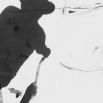
 Alison McKenna, installation image at John Marchant Gallery July 2017 - photography by John Marchant
">
Alison McKenna, installation image at John Marchant Gallery July 2017 - photography by John Marchant
"> Alison McKenna, Untitled (2017), acrylic, housepaint, charcoal, spray paint, pencil on linen, 195 x 130 cm - image courtesy John Marchant Gallery
">
Alison McKenna, Untitled (2017), acrylic, housepaint, charcoal, spray paint, pencil on linen, 195 x 130 cm - image courtesy John Marchant Gallery
"> Alison McKenna, Untitled (2017), acrylic, housepaint, charcoal, spray paint, pencil on linen, 195 x 130 cm - image courtesy John Marchant Gallery
">
Alison McKenna, Untitled (2017), acrylic, housepaint, charcoal, spray paint, pencil on linen, 195 x 130 cm - image courtesy John Marchant Gallery
"> Alison McKenna, Untitled Diptych (2016), acrylic, flashe, spray paint, graphite on paper, two parts 41.5 x 29.5cm each - image courtesy John Marchant Gallery.
">
Alison McKenna, Untitled Diptych (2016), acrylic, flashe, spray paint, graphite on paper, two parts 41.5 x 29.5cm each - image courtesy John Marchant Gallery.
">
Alison McKenna, Untitled (2017), flashe, acrylic, spray paint on canvas, 200 x 155 cm - image courtesy John Marchant Gallery ">
 Alison McKenna, Untitled (drawing 1) 2017, acrylic, house paint, pencil on paper, 38 x 28 cm - image courtesy John Marchant Gallery
">
Alison McKenna, Untitled (drawing 1) 2017, acrylic, house paint, pencil on paper, 38 x 28 cm - image courtesy John Marchant Gallery
"> Alison McKenna, Untitled (drawing 2) 2017, acrylic, house paint and spray paint on paper, 38 x 28 cm - image courtesy John Marchant Gallery
">
Alison McKenna, Untitled (drawing 2) 2017, acrylic, house paint and spray paint on paper, 38 x 28 cm - image courtesy John Marchant Gallery
"> Alison McKenna, Untitled Diptych (drawing 3) 2017, acrylic, house paint and spray paint on paper, two Parts, 38 x 28 cm each - image courtesy John Marchant Gallery
">
Alison McKenna, Untitled Diptych (drawing 3) 2017, acrylic, house paint and spray paint on paper, two Parts, 38 x 28 cm each - image courtesy John Marchant Gallery
">
Alison McKenna, Untitled (drawing 4) (2017), acrylic, house paint, spray paint on paper, 28 x 38 cm - image courtesy John Marchant Gallery ">
 Alison McKenna, Untitled (drawing 5) (2017), acrylic, house paint and spray paint on paper, 38 x 28 cm - image courtesy John Marchant Gallery
">
Alison McKenna, Untitled (drawing 5) (2017), acrylic, house paint and spray paint on paper, 38 x 28 cm - image courtesy John Marchant Gallery
"> Alison McKenna, Untitled (2017), acrylic, charcoal, spray paint, pencil on linen, 195 x 130 cm - image courtesy John Marchant Gallery
">
Alison McKenna, Untitled (2017), acrylic, charcoal, spray paint, pencil on linen, 195 x 130 cm - image courtesy John Marchant Gallery
"> Alison McKenna, Untitled (2017), acrylic, house paint and spray paint on paper, two parts, 38 x 28 cm each - image courtesy John Marchant Gallery
">
Alison McKenna, Untitled (2017), acrylic, house paint and spray paint on paper, two parts, 38 x 28 cm each - image courtesy John Marchant Gallery
">
Alison McKenna, Untitled (drawing 6) (2017), acrylic, house paint and spray paint on paper, two Parts 42 x 29.7 cm each - image courtesy John Marchant Gallery ">
 Alison McKenna, Untitled (drawing 7) (2017), acrylic, house paint and spray paint on paper, 38 x 28 cm - image courtesy John Marchant Gallery
">
Alison McKenna, Untitled (drawing 7) (2017), acrylic, house paint and spray paint on paper, 38 x 28 cm - image courtesy John Marchant Gallery
"> Alison McKenna, Andalucia, Spain - Photography by Yeshe Mc Kenna
">
Alison McKenna, Andalucia, Spain - Photography by Yeshe Mc Kenna
"> Alison McKenna, Andalucia, Spain - Photography by Yeshe Mc Kenna
">
Alison McKenna, Andalucia, Spain - Photography by Yeshe Mc Kenna
">






















